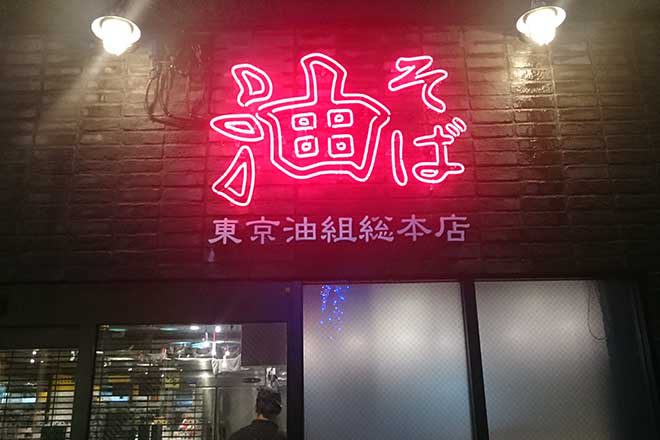 漢字で 「油」と 書いて あぶらと 読みます。「油そば」。なんだか 太りそうな 食べ物ですね。
漢字で 「油」と 書いて あぶらと 読みます。「油そば」。なんだか 太りそうな 食べ物ですね。


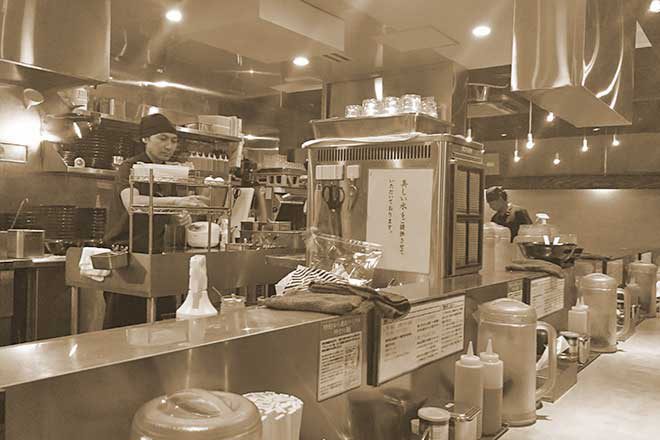 店内は ラーメン屋と 同じです。カウンターが あって、店員が 2人 働いていました。この 時間は、ひまそうでした。
店内は ラーメン屋と 同じです。カウンターが あって、店員が 2人 働いていました。この 時間は、ひまそうでした。


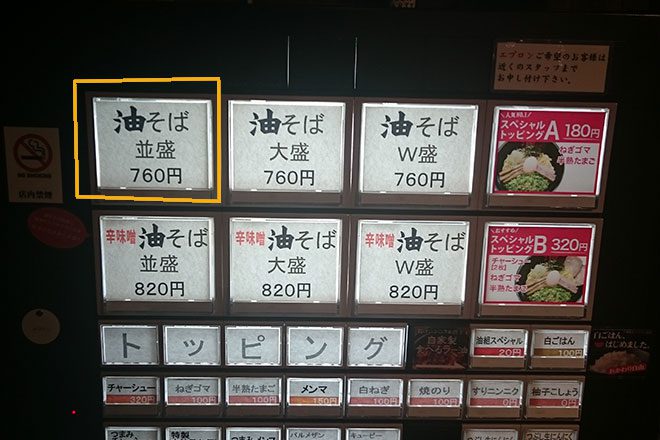 先に 食券を 買わなければなりません。「並盛(なみもり)」は ふつうの りょうという 意味です。760円ですね。ん? となりの 「大盛」も 同じ金がくです。ん? その横の「W盛り」も 同じ 金がくですね。「W盛り」は 大盛より りょうが 多いんです。
先に 食券を 買わなければなりません。「並盛(なみもり)」は ふつうの りょうという 意味です。760円ですね。ん? となりの 「大盛」も 同じ金がくです。ん? その横の「W盛り」も 同じ 金がくですね。「W盛り」は 大盛より りょうが 多いんです。


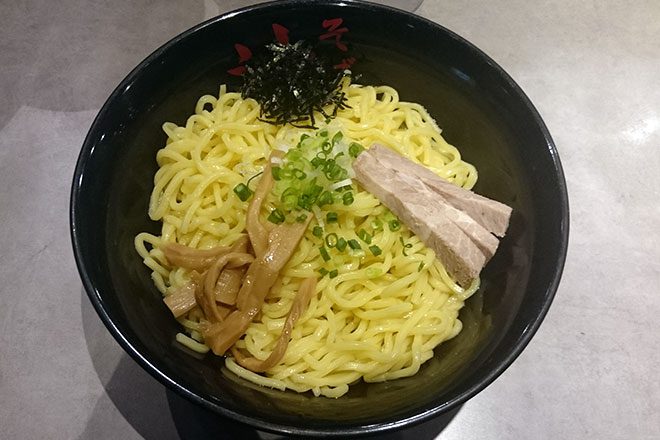 これが 「大盛」です。
これが 「大盛」です。


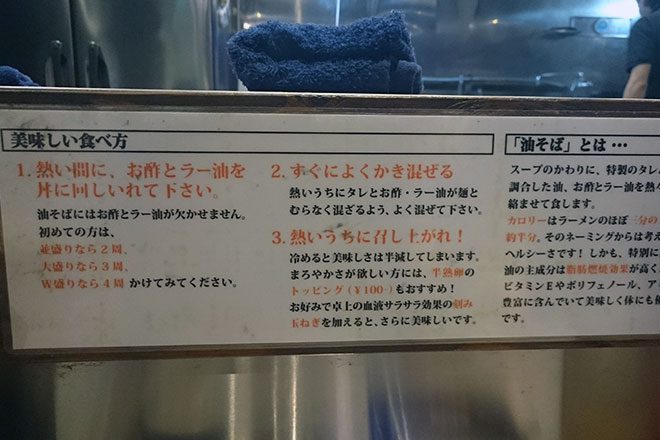 席の 前に、食べ方が 書いてあります。酢と ラー油を よく まぜると 美味しいみたいです。
席の 前に、食べ方が 書いてあります。酢と ラー油を よく まぜると 美味しいみたいです。


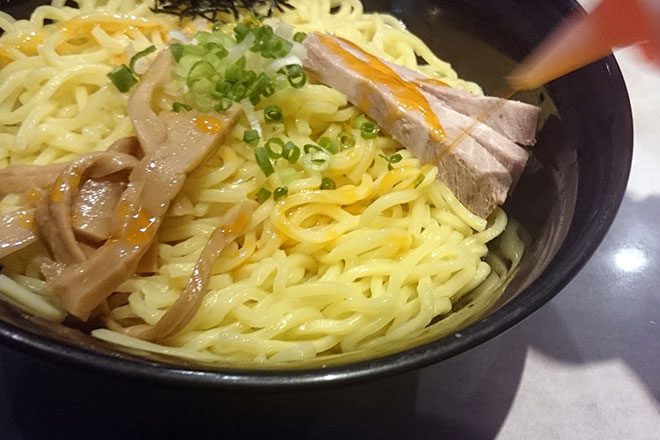 書いてあるとおりに 酢と ラー油を 入れてみます。
書いてあるとおりに 酢と ラー油を 入れてみます。


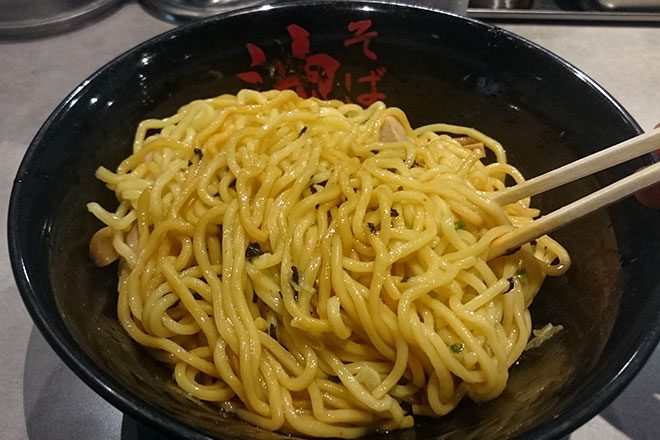 まぜると 色が 変わりました。
まぜると 色が 変わりました。


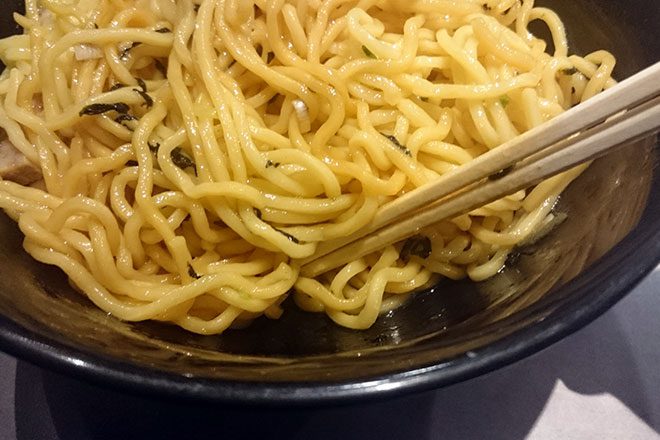 ラーメンの ように スープが ありません。あぶらだけです。
ラーメンの ように スープが ありません。あぶらだけです。


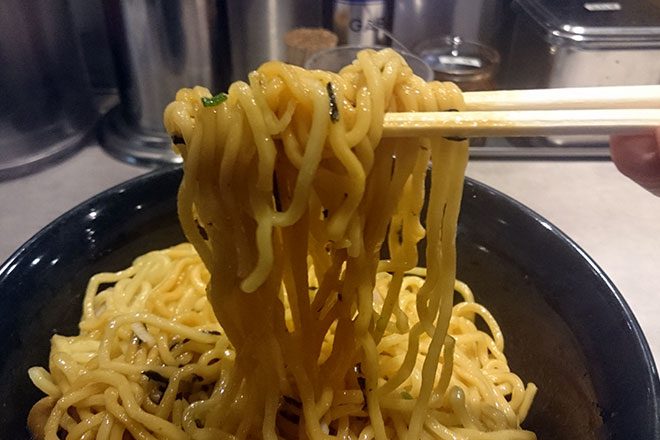 めんが 少し 太いです。味は、あぶらっこくありません。
めんが 少し 太いです。味は、あぶらっこくありません。


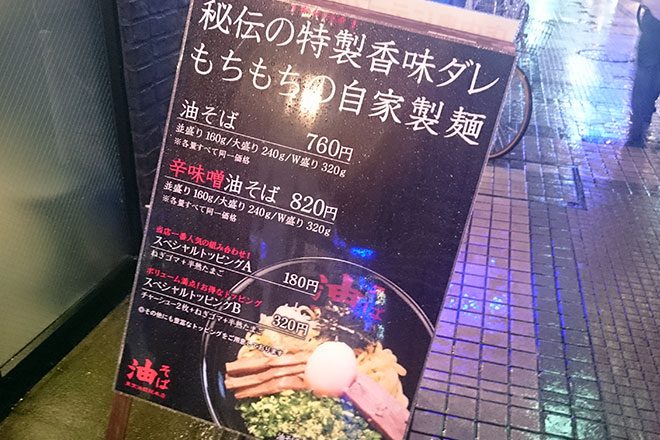 じつは、「油そば」の カロリーは 「ラーメン」のより 低いそうです。ちょっと 安心しました。美味しいですよ!
じつは、「油そば」の カロリーは 「ラーメン」のより 低いそうです。ちょっと 安心しました。美味しいですよ!



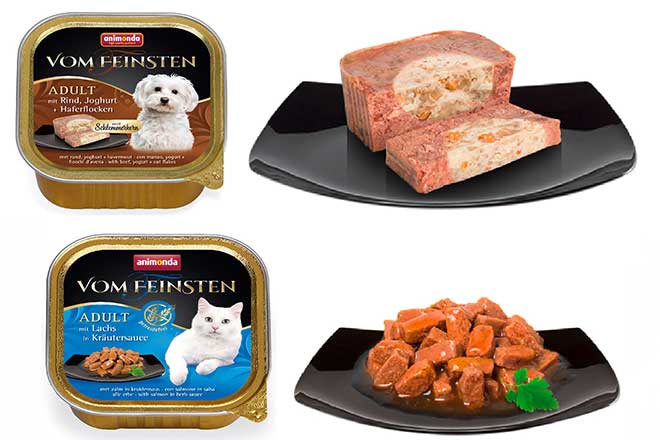
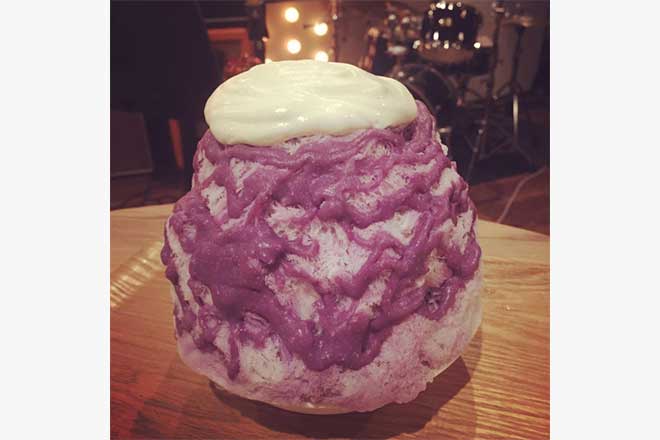
ありがとうございます。色々な言葉を勉強になりました。
Wonderful construction combining pictures, Japanese, vocabulary lookup, Engilish, and more. Spectacular website!
美味しそうですね。
I’m really confused. The sentence ‘まぜると色が変わりました。‘ has the particle と, which can not be used with past tense (as the note itself says). It doesn’t seem right. :(
I’m really confused. The sentence ‘まぜると色が変わりました。‘ has the particle と, which can not be used with past tense (as the note itself says). It doens’t seem right. :(
I’m really confused. The sentence ‘まぜると色が変わりました。‘ has the particle と, which can not be used with past tense (as the note itself says). It doesn’t seem right. :(
It means the verb before と can only be present form, whatever comes after it can be in any tense. so 混ぜると…is fine but 混ぜたと… is ungrammatical
Thanks for the article! This website really helps improving my japanese!
どうして並盛と大盛とW盛は同じ価格ですか
なんで並盛と大盛とW盛は同じ価格ですか
very well
Great :)